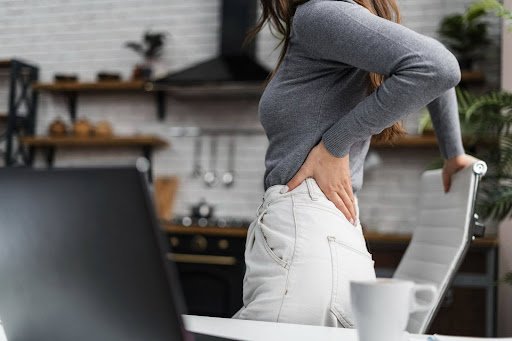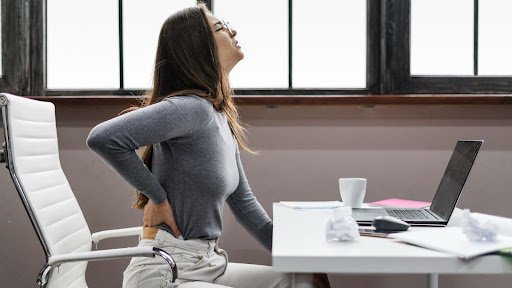Understanding the Anatomy of the Left Side Back
The left side of the back encompasses a complex network of muscles, bones, nerves, and organs. The lumbar spine, located in the lower back, supports much of the body’s weight and allows for flexibility and movement. Adjacent to the spine are muscles such as the quadratus lumborum and the erector spinae, which play crucial roles in maintaining posture and facilitating movement. Additionally, internal organs like the left kidney, portions of the intestines, and, in women, the left ovary are situated near the left lower back region.

Key Muscles and Structures Involved
Several muscles and structures contribute to the functionality and stability of the left side back:
- Quadratus Lumborum (QL): This deep muscle connects the pelvis to the spine and ribs, assisting in lateral flexion and stabilisation of the lumbar spine.
- Erector Spinae: A group of muscles running parallel to the spine, responsible for extending and rotating the back.
- Latissimus Dorsi: A broad muscle that aids in shoulder movement and supports the spine.
- Multifidus: These small muscles stabilise the vertebrae during movement.
How Anatomy Influences Pain Patterns
The intricate interplay between muscles, nerves, and organs means that pain in the left side of the back can originate from various sources. Muscular issues, such as strains or spasms, often result from overuse or improper posture. Nerve compression, as seen in conditions like herniated discs, can lead to radiating pain or numbness. Additionally, problems with internal organs, such as kidney infections or stones, can manifest as referred pain in the back. Recognising these patterns is vital for accurate diagnosis and treatment.
Common Causes of Left Side Back Pain
Muscle Strain and Poor Posture
Muscle strains are among the most common causes of left-sided back pain. They typically result from lifting heavy objects improperly, sudden movements, or prolonged periods of poor posture. Symptoms include localised pain, stiffness, and muscle spasms. Maintaining proper posture and engaging in regular stretching can help prevent such strains.

Herniated or Bulging Discs
Intervertebral discs act as cushions between the vertebrae. When a disc herniates or bulges, it can press against nearby nerves, causing pain that may radiate down the leg (sciatica). This condition often results from age-related degeneration or injury. Symptoms include sharp pain, numbness, or weakness in the affected area.

Kidney Issues
The left kidney’s proximity to the back means that kidney infections or stones can cause left side back pain. Such pain is typically deep and aching, accompanied by symptoms like fever, nausea, or changes in urine. Prompt medical attention is crucial to address these conditions effectively.
Arthritis
Osteoarthritis and other degenerative joint diseases can affect the spine’s facet joints, leading to inflammation and pain. This type of pain is often chronic and may worsen with movement. Treatment focuses on managing symptoms and maintaining mobility.

Recognising Symptoms of Concern
Localised Pain and Discomfort
Pain confined to the left side of the back, especially if it persists beyond a few days, warrants attention. Accompanying symptoms like swelling, redness, or warmth may indicate inflammation or infection. It’s essential to monitor the pain’s intensity, duration, and any activities that exacerbate it.
Radiating Pain
Pain that extends from the back to other areas, such as the buttocks, legs, or abdomen, may suggest nerve involvement or referred pain from internal organs. Such patterns necessitate a thorough medical evaluation to determine the underlying cause.
When to See a Pain Specialist
Consulting a pain specialist is advisable if:
- Pain persists for more than a week despite rest and over-the-counter medications.
- There’s a history of trauma or injury to the back.
- Symptoms include numbness, tingling, or weakness in the legs.
- Pain is accompanied by unexplained weight loss, fever, or changes in bowel or bladder function.
How Pain Specialists Diagnose Left Side Back Pain
Pain specialists employ a comprehensive approach to diagnose left-sided back pain:
- Medical History: Understanding the patient’s symptoms, lifestyle, and any previous injuries or conditions.
- Physical Examination: Assessing posture, range of motion, and areas of tenderness.
- Imaging Studies: Utilising X-rays, MRI, or CT scans to visualise the spine’s structures and identify abnormalities.
- Laboratory Tests: Conducting blood or urine tests if an infection or systemic condition is suspected.
Treatment Options Offered by Pain Specialists
Pain specialists focus on non-surgical interventions to alleviate discomfort and improve function:
- Physical Therapy: Customised exercises to strengthen muscles, enhance flexibility, and promote proper posture.
- Medications: Prescribing anti-inflammatory drugs, muscle relaxants, or analgesics to manage pain.
- Injections: Corticosteroid or anaesthetic injections are administered to reduce inflammation and provide relief.
- Alternative Therapies: Incorporating acupuncture, massage, or chiropractic care as complementary treatments.
These approaches aim to address the root cause of pain and restore the patient’s quality of life.
Medications and Non-Surgical Pain Relief
Non-surgical treatments are often effective in managing left-sided back pain:
- Nonsteroidal Anti-Inflammatory Drugs (NSAIDS): Medications like ibuprofen or naproxen reduce inflammation and alleviate pain.
- Muscle Relaxants: These help relieve muscle spasms and improve mobility.
- Topical Analgesics: Creams or patches applied to the skin can provide localised pain relief.
- Heat and Cold Therapy: Applying heat can relax muscles, while cold packs reduce inflammation.
Combining these treatments with physical therapy enhances their effectiveness.
Prevention Tips for Left Side Back Pain
Preventing back pain involves adopting healthy habits:
- Maintain Proper Posture: Ensure ergonomic seating and avoid slouching.
- Exercise Regularly: Engage in activities that strengthen core muscles and enhance flexibility.
- Lift Correctly: Use your legs, not your back, when lifting heavy objects.
- Stay Hydrated and Eat a Balanced Diet: Proper nutrition supports muscle and bone health.
- Avoid Prolonged Sitting: Take breaks to stand, stretch, and move around during long periods of inactivity.
Conclusion
Left-side back pain can stem from various causes, ranging from muscle strains to more serious conditions like herniated discs or kidney issues. Understanding the underlying anatomy and recognising concerning symptoms are crucial steps toward effective management. Non-surgical treatments, including physical therapy, medications, and lifestyle modifications, often provide significant relief. Consulting a pain specialist ensures a comprehensive approach to diagnosis and treatment tailored to the individual’s needs. By adopting preventive measures and seeking timely medical attention, individuals can maintain spinal health and improve their quality of life.
For more information on non-surgical pain treatments, visit Alleviate Pain Clinic.
FAQs
You should worry if the pain persists, worsens, or is accompanied by symptoms like fever, weight loss, numbness, or changes in bowel or bladder function.
Consult a doctor if left back pain lasts more than a week, follows an injury, or includes symptoms like radiating pain, weakness, or unusual urinary or digestive issues.
Back pain may be serious if it's persistent, disrupts daily activity, or comes with leg weakness, numbness, unexplained fever, or loss of bladder or bowel control.
Nonsteroidal anti-inflammatory drugs (NSAIDS) like ibuprofen or naproxen are often effective for reducing inflammation and relieving mild to moderate back pain.
The best treatment often combines non-surgical options like physical therapy, medications, lifestyle changes, and targeted injections based on the underlying cause.





